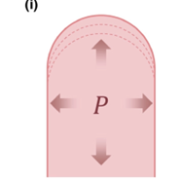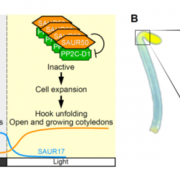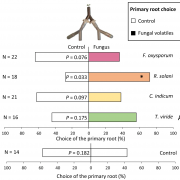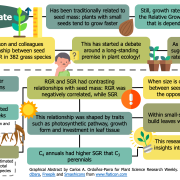Jasmonate biosynthesis arising from altered cell walls is prompted by turgor-driven mechanical compression (Sci. Advances)
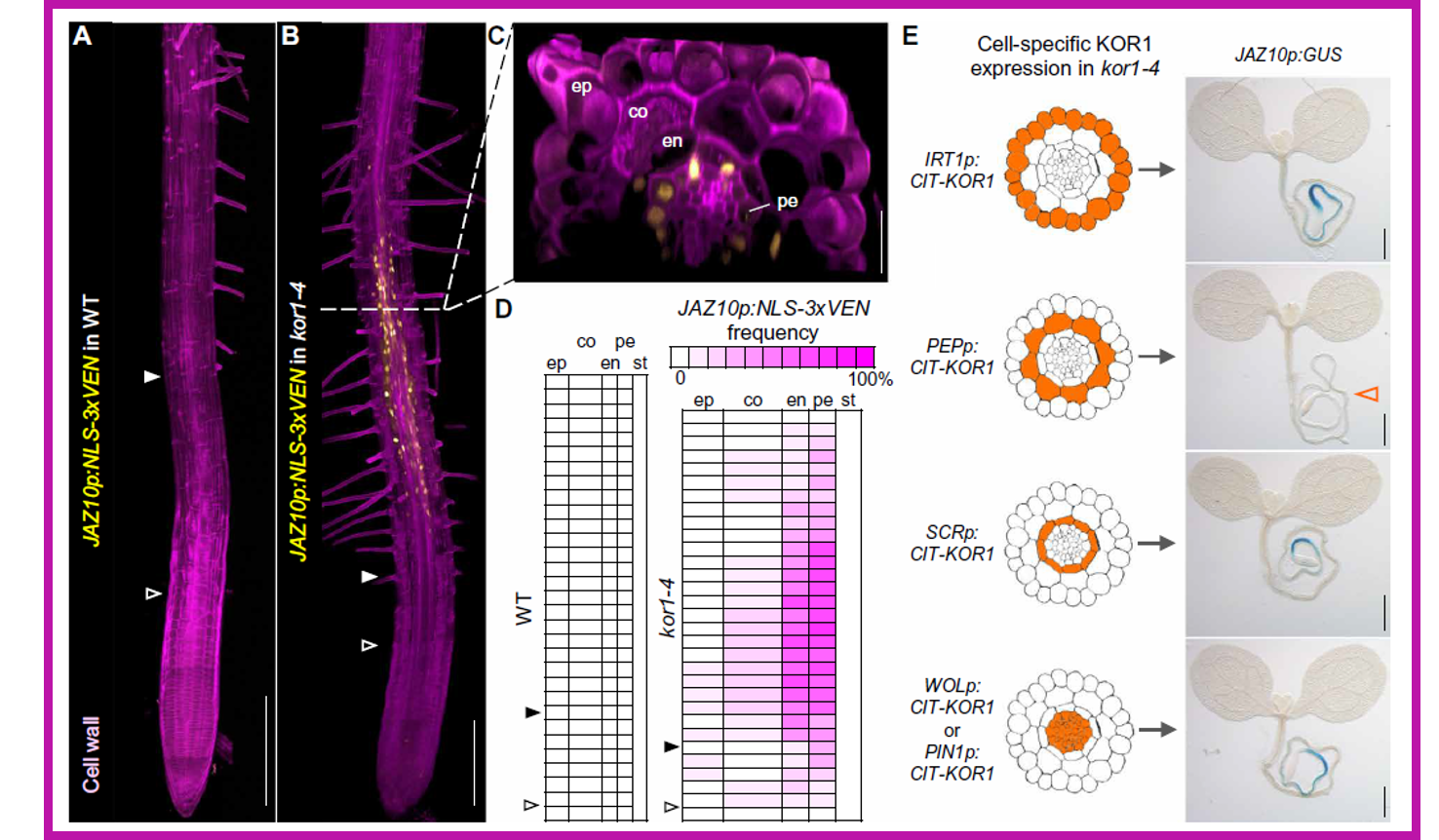 Jasmonate (JA) coordinates plant development and response to a wide range of biotic and abiotic stresses. JA production is stimulated by wounding, which damages cell walls, and increased in plants carrying mutations in cellulose biosynthetic genes. Nevertheless, the intracellular events connecting mechanical stress and JA production largely remain unresolved. In a forward genetic screen aimed at the identification of repressors of JA signaling, Mielke and coworkers isolated mild alleles of korrigan1 (kor1), previously shown to have cellulose deficiencies, that showed activation of JA markers in primary roots and increased JA levels. Besides shorter roots, kor1 mutants displayed enlargement of cortex cells and induction of JA signaling in endodermal and pericycle cells of the early differentiation zone of primary roots. Cortex-specific expression of functional KOR1 complemented the kor1 mutant phenotype and abolished the activation of JA reporters, indicating that KOR1 activity in the cortex prevents JA production in inner tissues of the root. When kor1 mutants were grown on mannitol (hyperosmotic conditions), the mutant phenotype was also reverted to normal, through increased root elongation, reduced size of root cells and abolished JA signaling. These findings suggested that changes in the turgor pressure mediate JA biosynthesis, which is triggered in response to mechanical compression and/or osmotic stress. (Summary by Michela Osnato @michela_osnato) Sci Advances 10.1126/sciadv.abf0356
Jasmonate (JA) coordinates plant development and response to a wide range of biotic and abiotic stresses. JA production is stimulated by wounding, which damages cell walls, and increased in plants carrying mutations in cellulose biosynthetic genes. Nevertheless, the intracellular events connecting mechanical stress and JA production largely remain unresolved. In a forward genetic screen aimed at the identification of repressors of JA signaling, Mielke and coworkers isolated mild alleles of korrigan1 (kor1), previously shown to have cellulose deficiencies, that showed activation of JA markers in primary roots and increased JA levels. Besides shorter roots, kor1 mutants displayed enlargement of cortex cells and induction of JA signaling in endodermal and pericycle cells of the early differentiation zone of primary roots. Cortex-specific expression of functional KOR1 complemented the kor1 mutant phenotype and abolished the activation of JA reporters, indicating that KOR1 activity in the cortex prevents JA production in inner tissues of the root. When kor1 mutants were grown on mannitol (hyperosmotic conditions), the mutant phenotype was also reverted to normal, through increased root elongation, reduced size of root cells and abolished JA signaling. These findings suggested that changes in the turgor pressure mediate JA biosynthesis, which is triggered in response to mechanical compression and/or osmotic stress. (Summary by Michela Osnato @michela_osnato) Sci Advances 10.1126/sciadv.abf0356


